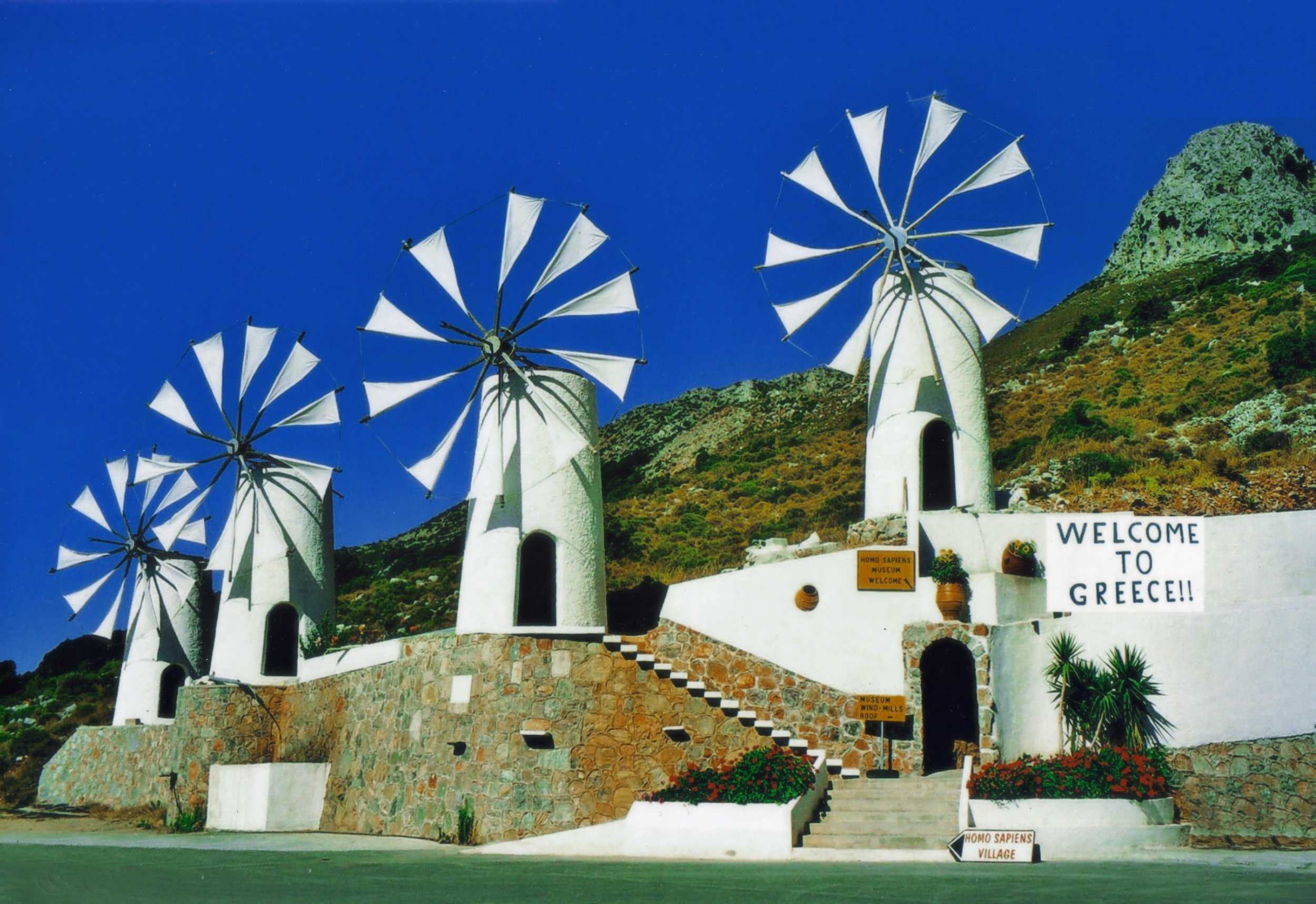Daily tour in Lassithi Plateau
Stops: Kera Monastery (15 min) optional- Cave of Zeus (45 min)-Krasi (15 min) optional
Estimated time: 2 (two) hours and 50 (fifty) minutes
Keras Kardiotissas Monastery
The Keras Kardiotissas Monastery or simply Keras Monastery (Greek: Μονή Κεράς Καρδιώτισσας or Μονή Κεράς) is an Eastern Orthodox monastery dedicated to Virgin Mary that is situated near the village of Kera of the Heraklion regional unit in Crete, Greece. It is built on the north slopes of Mt. Dikti, at an altitude of 650 m and a location that is approximately 50 km east of Heraklion, next to the road to Lasithi Plateau.
History
The exact date of the monastery's establishment is unknown. However, references to it are made in manuscripts dating from the early fourteenth century.[1] The monastery was named after an old icon of Theotokos that according to tradition was miraculous. That icon was stolen in 1498 by a wine merchant and transferred to Rome where it is now permanently enshrined in the Church of St. Alphonsus near the Esquiline Hill.[2] The stolen icon was replaced by another one in 1735 that is also regarded as miraculous. During the Ottoman occupation of Crete, the monastery often served as a local revolutionary center and suffered several retaliatory attacks as a result. In 1720, Kera monastery became Stauropegic (independent of the local Bishop).
Architecture
The monastery is surrounded by fortified walls. The main church (katholikon) was originally built as an arch-covered single space structure and was later expanded with two narthexes and a smaller chapel. The church features murals dating to the 14th and 15th centuries.
Current status
Today, the monastery functions as a nunnery. It celebrates the birth of Mary on September 8th every year.
Psychro Cave
is an ancient Minoan sacred cave in Lasithi plateau in the Lasithi district of eastern Crete. Psychro is associated with the Diktaean Cave (Greek: Δικταῖον Ἄντρον Diktaion Antron), one of the putative sites of the birth of Zeus; other legends place it as the Idaean Cave on Mount Ida. According to Hesiod, Theogony 477, Rhea gave birth to Zeus in a cave of Mount Aegaeon, near Lyttos; since the late nineteenth century the cave above the modern village of Psychro has been identified with this sanctuary.
Geography
Psychro is 1,025 metres above sea level. The cave is located in the prefecture of Lasithi. The Dictaean cave is famous in Greek mythology as the place where Amalthea, nurtured the infant Zeus with her goat's milk. The archaeology attests to the site's long use as a place of cult worship. The nurse of Zeus, who was charged by Rhea to raise the infant Zeus in secret here, to protect him from his father Cronus (Krónos) is also called the nymph Adrasteia in some contexts.[1] It is one of a number of caves believed to have been the birthplace or hiding place of Zeus.[2] The mountains, of which the cave are part, are known in Crete as Dikte.
Krassi Village
Krassi is a small village 47 Km's from Iraklion and 17 km from Malia at an altitude of 600 m.asl, on the way to Lassithi plateau, and is administratively part of the Municipality of Malia. The village is one of the prettiest in Crete, with a lot of springs. Due to the free running water , it is covered with walnut trees, plane trees and all kinds of vegetation. Next to the spring in the middle of the village is one of the oldest and biggest plane trees in Crete (its root has a circumference of 22 meters!).
Nikos Kazantzakis one of the most important Greek writers and philosophers of the 20th century spent quite some time in Kratsi as evidenced by the plaque mounted on the spring in the center of the village.
There are various hypotheses regarding the etymology of the name of the village. Some suggest it was named from the ancient Greek word Kras meaning head/top due to its location high above the plane. Others suggest it was named after the first settler, mentioned in a notarie's document in 1279.
Krassi is mentioned together with the monastery of Kardiotissas, in a document from 1333 A.D. as belonging to the patriarch of Constantinople, who was renting the land to the locals.

